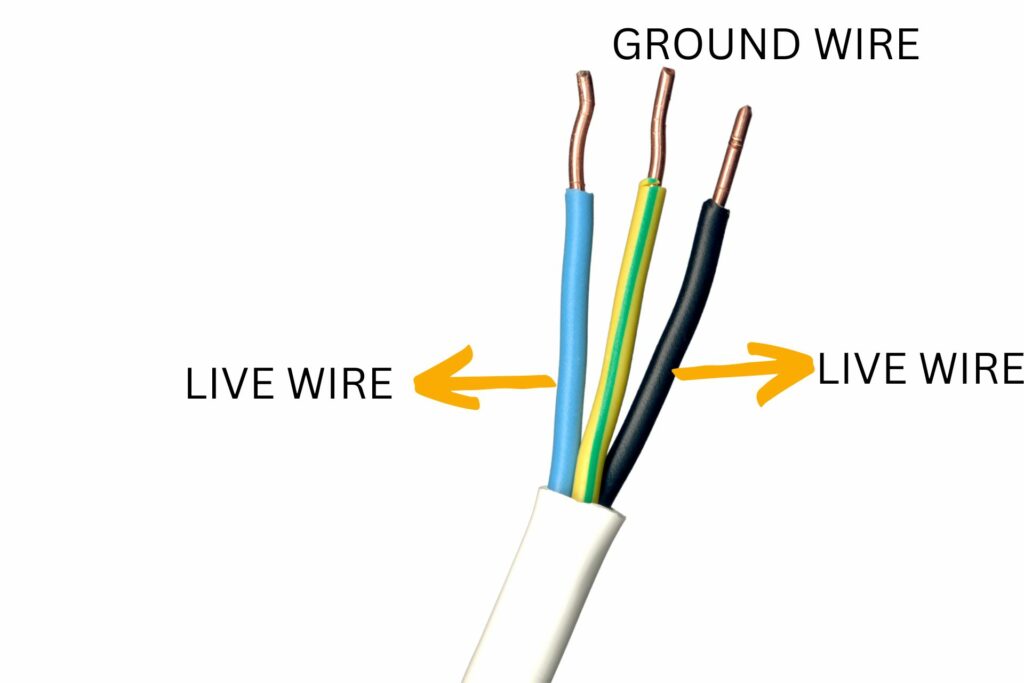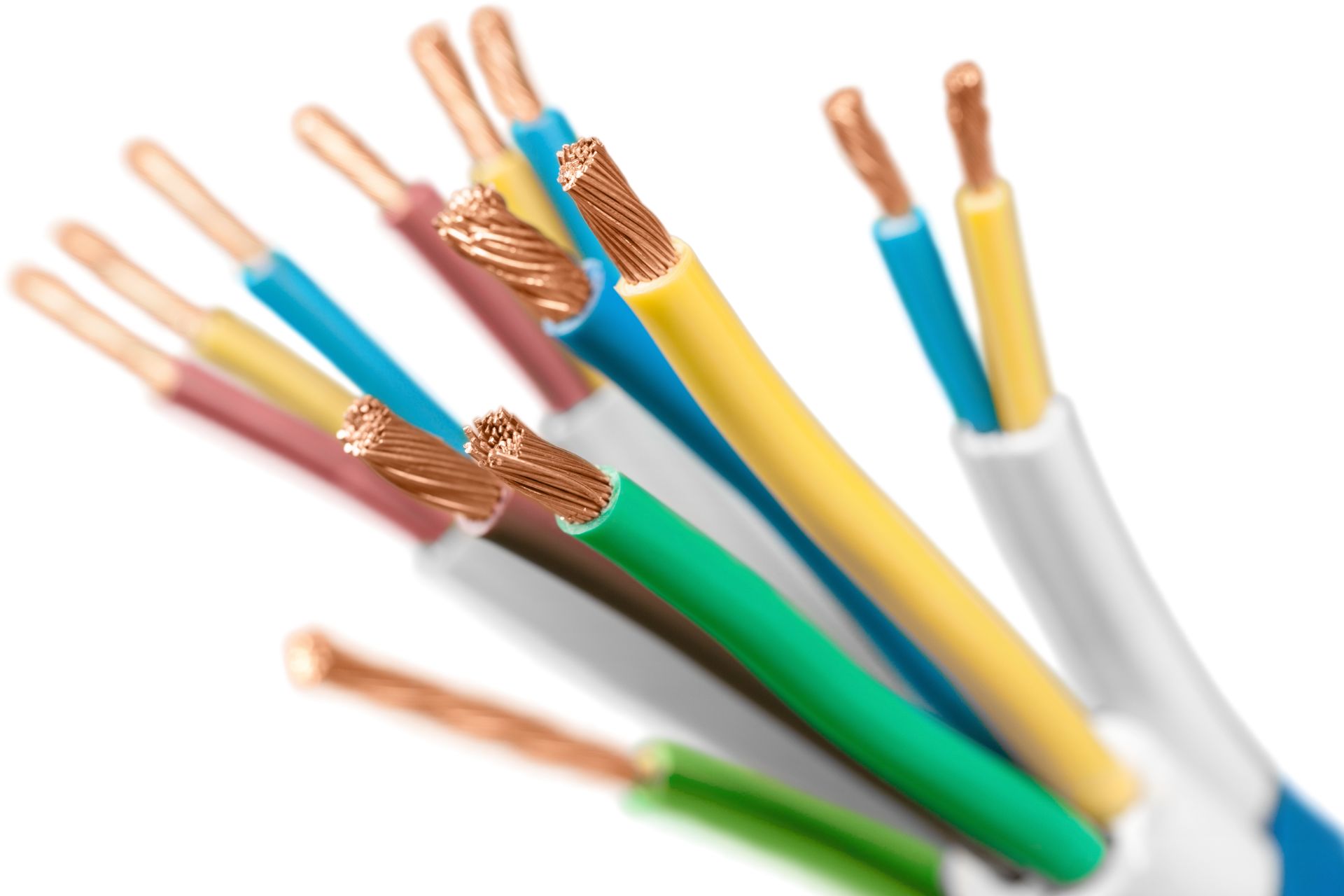The green wire is the ground. The black wire is positive, while the white wire is negative. But is that true?
Is Green Wire Positive Or Negative?
| Color | Polarity |
| Green Wire With Yellow Stripe | Ground |
| Dark Green Wire | Ground |
| Green Wire With White Stripe | Ground |
The green wire in modern circuits is the earth wire because it has zero potential with the earth. But that is not always true. The situation matters. For instance:
1). DC Power Has No Green Wire
You find direct current in small electronic devices and batteries. Direct current is called so because it flows in a single direction. More importantly, DC power uses three electrical wires, namely: red, black, and white (or grey).
The green wire is absent in this configuration. The red wire is positive, the black wire negative, and the white wire is the ground. Some systems have two black wires. In that case, the black wire with a white stripe is negative.
2). AC Power – Green Wire Is Ground
Your home uses alternating current. Alternating current is called so because it can change direction.
AC power offers different voltage options. Additionally, AC power has multiple phases. Don’t expect every technician to classify the wires in an AC power system with terms like ‘Positive’ and ‘Negative.’ They typically prefer the following categories:
- Black Wire – Phase 1
- Red Wire – Phase 2
- Blue Wire – Phase 3
- White Wire – Neutral
- Green Wire – Ground
- Green With A Yellow Stripe – Ground
As you can see, AC power has a green wire. It is common practice to assign ‘Positive’ to the black and red wires. They are both live wires. Although black is the primary positive conductor. The blue wire is also hot. But it is phase 3 hot.

The white remains neutral. It is neither positive nor negative. This is also true for the green wire (Ground). But this doesn’t surprise people that routinely wire their outlets. The green or bare line is always the earth/ground.
3). High-Voltage: Green Wire Is Ground
High-voltage wire color schemes mimic the codes found in AC power systems. Even though some of the colors change, high-voltage color schemes also associate the various colors with phases. They don’t use classifications like positive and negative. For instance:
- Brown Wire – Phase 1
- Orange Wire – Phase 2
- Yellow Wire – Phase 3
- Grey Wire – Neutral
- Green Wire – Ground
- Green With A Yellow Stripe – Ground
You find high-voltage wire color codes in industrial settings. The colors play a significant role because industrial settings use dangerous volumes of current. As such, misinterpreting the color codes can lead to death.
4). Speaker Wire – Green Wire Is Negative
A four-conductor speaker wire has the following configurations of wires and colors:
- Black – Negative
- Red – Positive
- Green – Negative
- White/Yellow – Positive
In this configuration, the green conductor is negative.
5). Power Cord – Green Wire Is Ground
The cord that brings power to your appliances has two or three conductors, depending on the number of prongs. A cord with a two-prong plug has two wires: white (Neutral) and black/red (Hot).
You won’t find a green wire in a two-prong plug because the green wire is the ground, and power cords can work without the ground. All they need is the hot wire to bring the power from the panel and the white wire to take it back. The ground is a protective tool. It is not essential to a power cord’s ability to transmit electricity.
A power cord with a three-prong plug has all three wires: white (Neutral), black/red (Hot), and green (Ground). In power cords, plugs and outlets, there is no positive or negative wire. Conductors are either hot, neutral, or ground.
6). International Electrotechnical Commission – Green Wire Is Earth Line
European manufacturers use the color codes specified by the IEC. They don’t rely on the rulings of American regulators.
According to IEC, The green wire is still the earth line in AC power circuits. The other color codes are also somewhat similar:
- Blue – Neutral
- Brown – Single Phase
- Brown (L1) – 3 Phase
- Black (L2) – 3 Phase
- Grey (L3) – 3 Phase.
If you live in Canada, check the Canadian Electric Code. In fact, you should check the regulations each country follows. Don’t be so quick to assume that your country uses the same color scheme found in North America.
How To Determine Whether The Wire Is Positive Or Negative?
Some wires are labeled. If you look at the jacket, it will tell you the polarity of the conductor. But this is not true in every case. Some wires don’t have labels. Look at the color and compare it to the color scheme your country’s regulator has published.
If you don’t have access to your regulator’s information, test the conductors with a multimeter. A negative wire will give you a negative reading. A positive wire will do the opposite (Positive reading).
Use Of Green Wire
The green wire provides grounding. It creates a path of least resistance for excess current to follow when a surge occurs. The green wire is the reason why you can touch the metal casing of an appliance without getting shocked, even when a surge or short circuit occurs.
Older appliances relied on two conductors, namely the hot and neutral lines. This made them dangerous because they exposed the user to deadly shocks. Eventually, it became mandatory in some regions for manufacturers to include a grounding conductor.
This is not limited to appliances. Your circuit has a grounding wire that leads to a grounding rod outside the house. When a surge occurs, the green or bare wire takes the dangerous currents out of the circuit to the grounding rod.
This protects your life, equipment, and property. Some houses don’t have a green wire, but only because they were built decades ago before grounding became a mandatory requirement. You cannot wire a home in the 21st Century without including green or bare wire.
Related Post:

